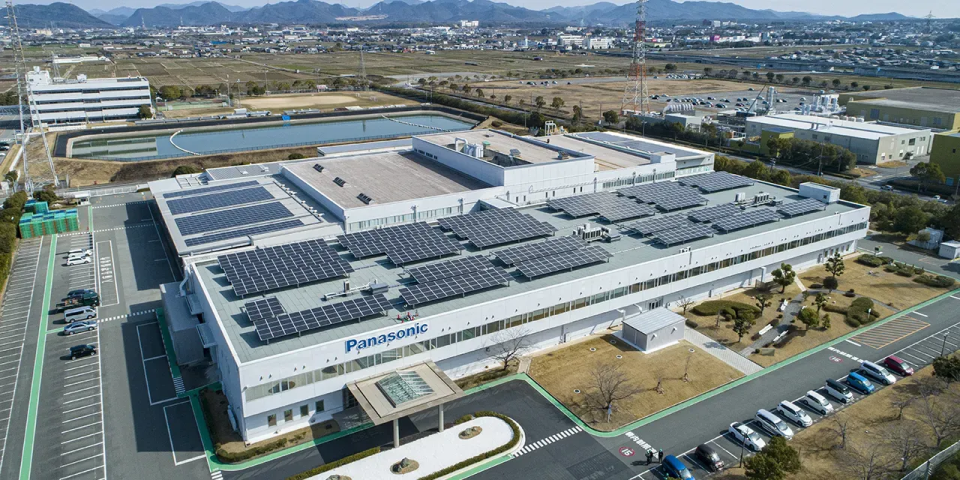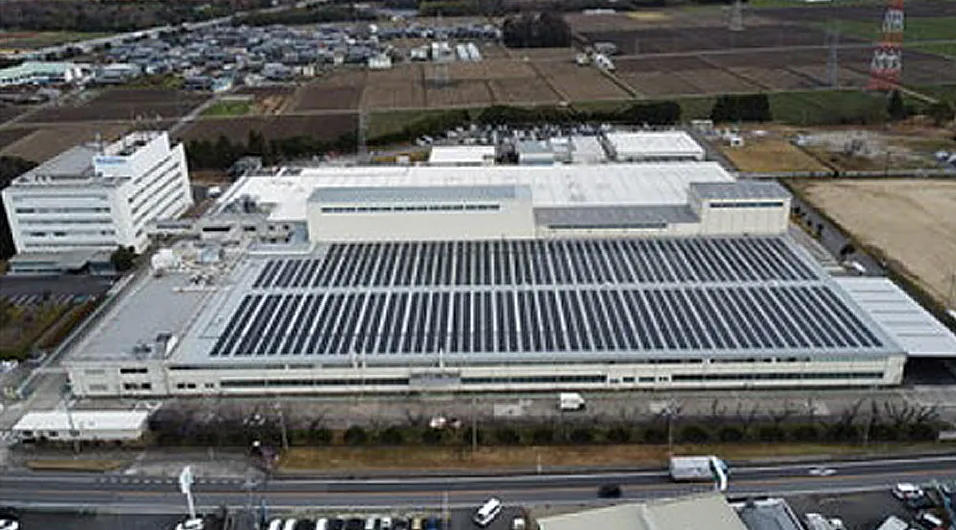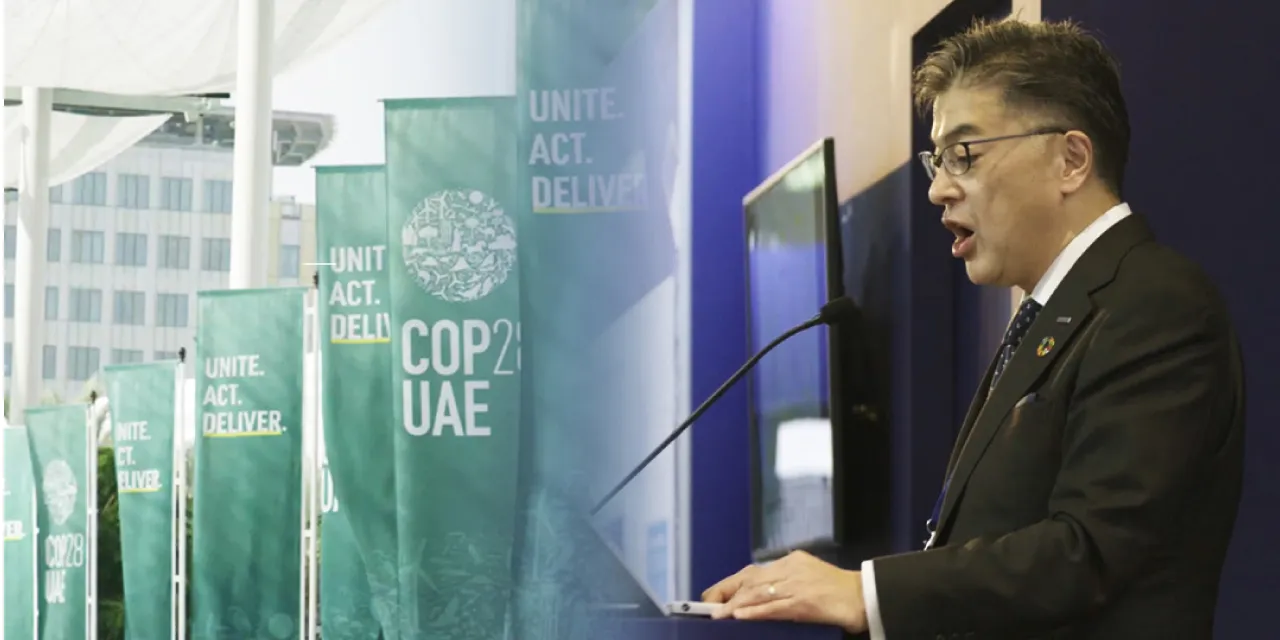The Panasonic Group Aims to Create Impact1 that Reduces CO2 Emissions by at Least 300 Million Tons by 2050.

In January 2022, we launched our Mid- to long-term Environmental Vision, Panasonic GREEN IMPACT (PGI), based on our belief that global environmental challenges, including climate change, are the most pressing global issues to prioritize across all our group businesses. PGI was formulated with the intention of accumulating efforts (Act) aimed at reducing CO2 emissions within our Group and in society, as we work in concert with society to achieve carbon neutrality.
PGI is classified into OWN IMPACT, signifying the fulfilment of our responsibility to reduce CO2 emissions in our own business activities, along with CONTRIBUTION IMPACT and FUTURE IMPACT, signifying our contribution to reducing society's CO2 emissions, and +INFLUENCE, signifying positive ripple effects that may lead to energy transformation and decarbonization of society as a whole, through changes in the behavior of our customers and society as a whole due to the initiatives described above and related communications. Through a combination of all the above, we aim to create impact that reduces CO2 emissions by at least 300 million tons1, equivalent to approximately 1% of current global CO2 emissions, by 2050.
1In 2020, energy-related CO2 emissions totaled 31.7 billion tons (source: IEA)
2Based on CO2 emissions data for the year 2020—indicates realization of net zero CO2 emissions from factory production around the world.
OWN IMPACT
We Aim to Achieve a Reduction of Approximately 110 million tons2 in CO2 Emissions Within Our Own Value Chain.

With OWN IMPACT, we will work on achieving net-zero emissions within our own value chain, in our business activities, throughout the process from the procurement of raw materials and manufacturing to product distribution, usage, and disposal.
Our actions will include increasing the number of our net zero factories3, and developing energy-saving home appliances. Through these actions and in conjunction with the decarbonization of society4, we aim to reduce CO2 emissions by approximately 110 million tons by 2050.
2 CO2 emissions based on FY2021 results.
3 Factories that achieved net zero CO2 emissions through the combined promotion of energy saving activities, the introduction of renewable energy, and the utilization of energy certificates and carbon credits.
4 Improvement in the CO2 emission coefficient of electricity due to the progress of decarbonization efforts by individual power suppliers

Increasing the number of net zero factories3

Energy-saving home appliances
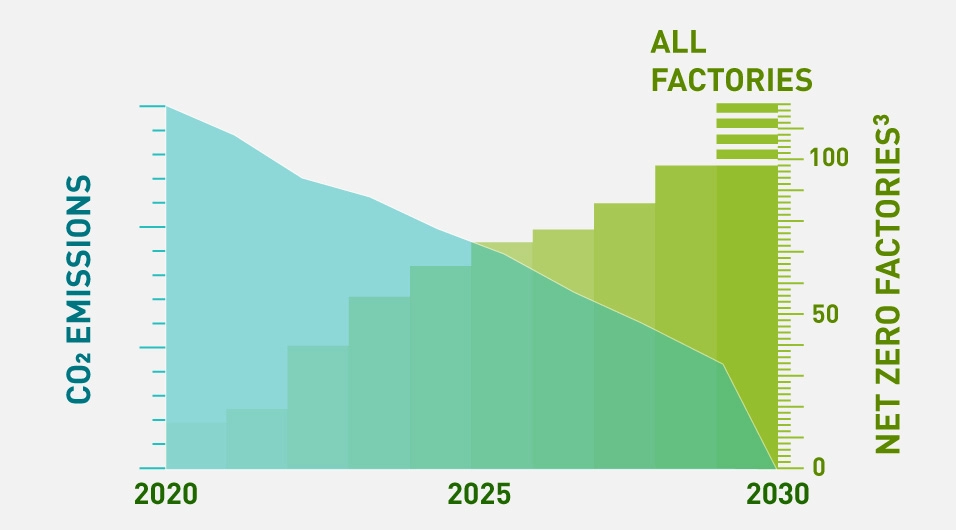
Aiming for net zero CO2 emissions at all factories by 2030
CONTRIBUTION IMPACT
Contributing to at least 100 Million Tons or More in Avoided Emissions of CO2 in Our Present Business Fields
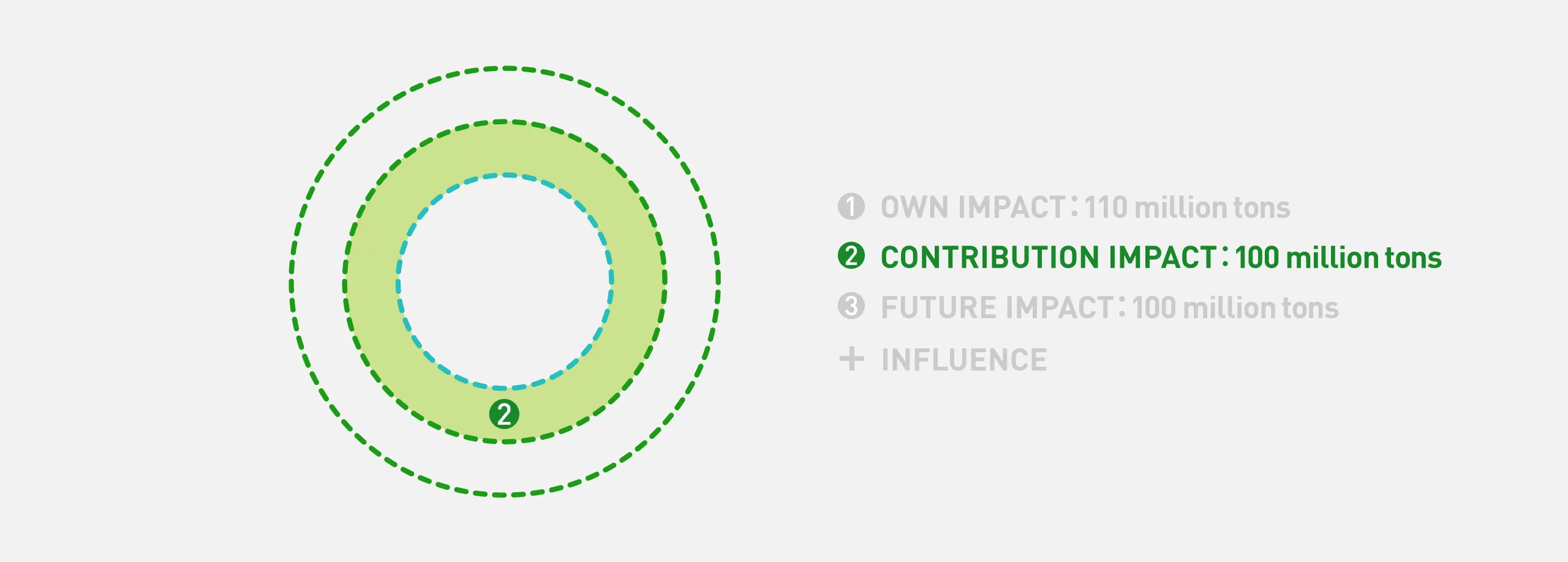
With CONTRIBUTION IMPACT, we will work within our present business fields to promote the wider use of environmentally responsible vehicles through improvements in the performance and cost-effectiveness of our automotive batteries, and to replace fossil fuel-based heating systems in homes and communities with heat-pump water heaters that use electricity. By having customers adopt our products and services, we aim to reduce their energy consumption and thus contribute to reducing CO2 emissions.
In areas such as lifestyles, infrastructure, and mobility, we aim, by 2050, to contribute to a reduction of at least 100 million tons of CO2 emissions generated by our customers and society in general. In the field of mobility, the transition to more efficient electric vehicles is an essential initiative. Through the widespread adoption of automotive batteries and chargers for environmentally responsible vehicles, we will contribute to the reduction of our customers’ CO2 emissions.
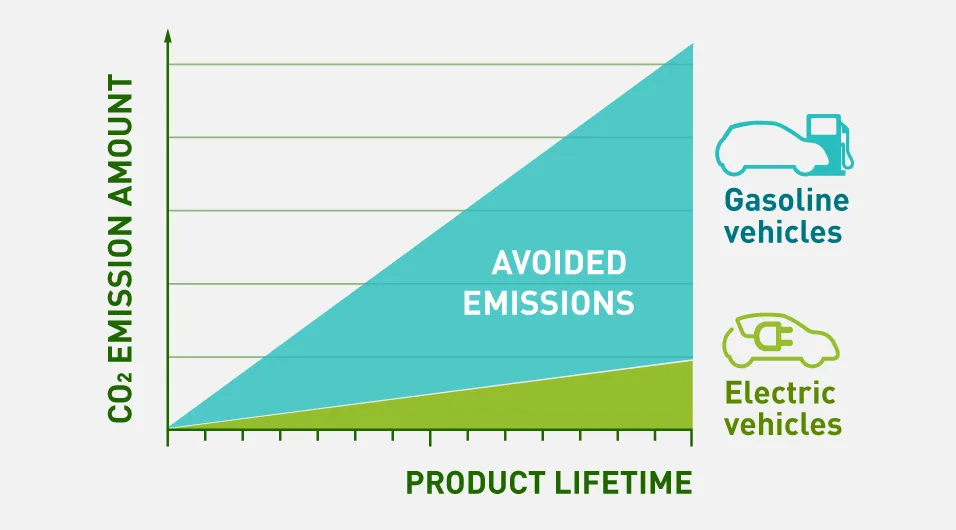
Contributing to the reduction of society's CO2 emissions through electrification
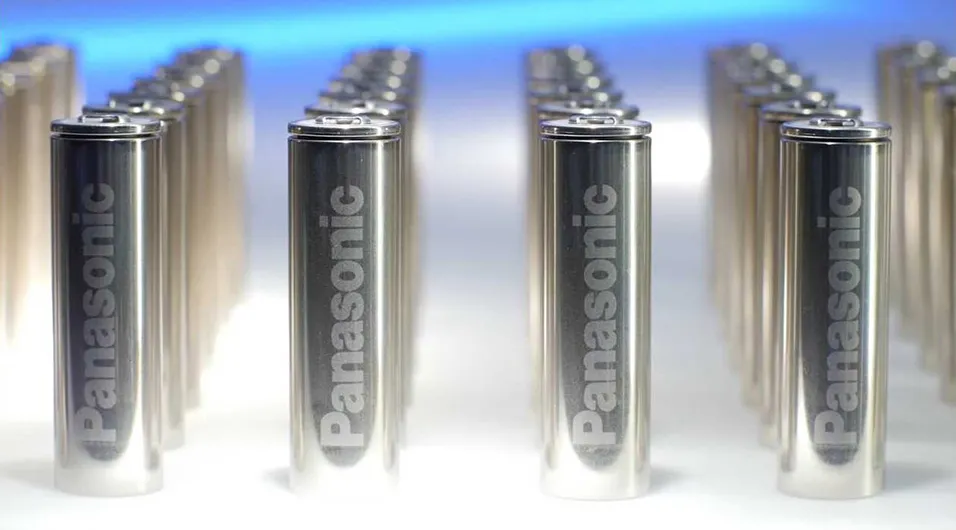
Cylindrical lithium-ion automotive batteries are contributing to the electrification of mobility.
FUTURE IMPACT
We Plan to Contribute to a CO2 Emissions Reduction of at least 100 Million Tons by Creating New Technologies or Businesses.
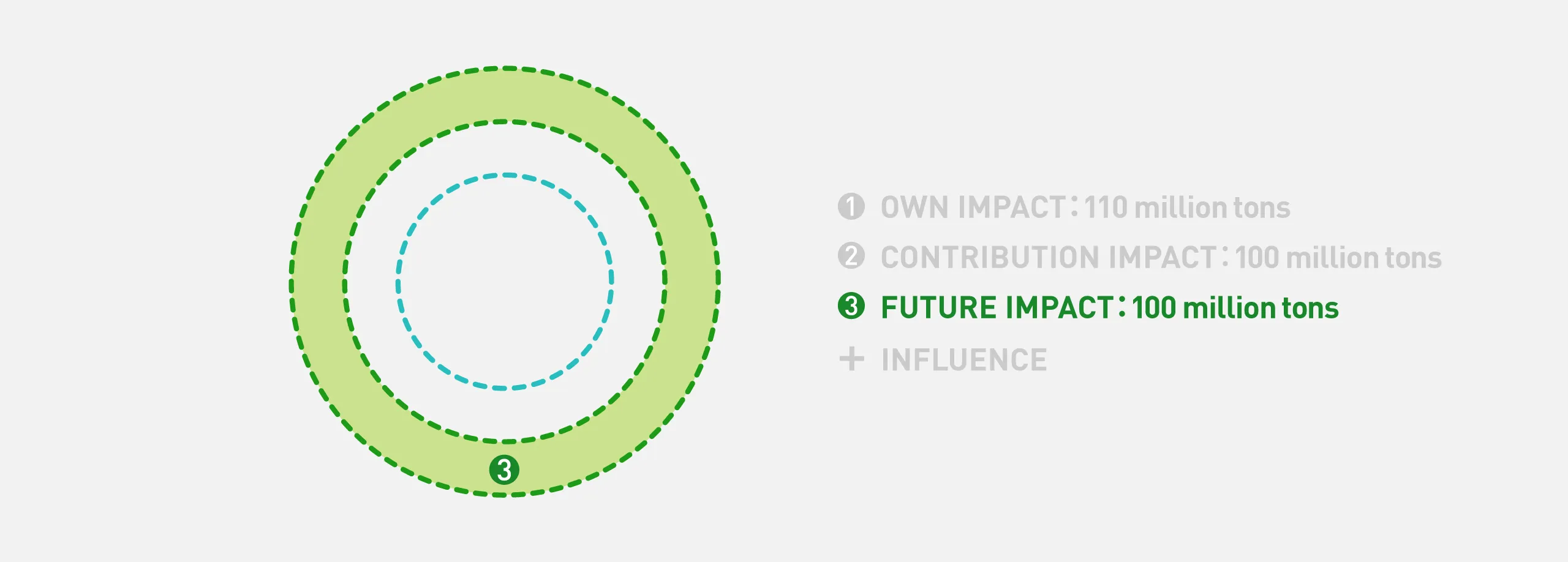
With FUTURE IMPACT, whereby we will contribute to society's energy transformation by creating new technologies or businesses, we aim to achieve avoided CO2 emissions of at least 100 million tons by 2050. By enhancing and disseminating advanced environmental technologies currently under development, such as Perovskite solar cells, we will contribute to the realization of a carbon-neutral society.

Glass-integrated Perovskite solar cells
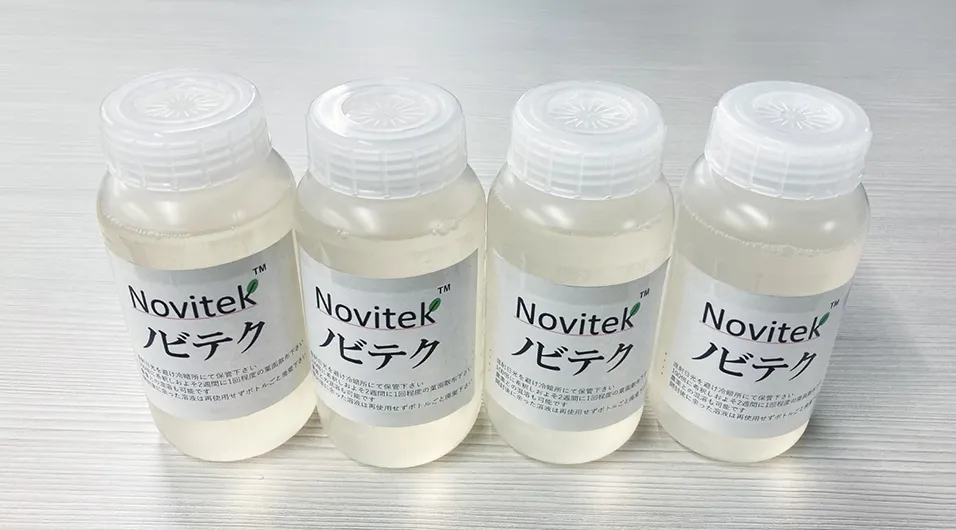
Bio-CO2 transformation using atmospheric CO2 to increase crop yields
Avoided Emissions Explained
In both our CONTRIBUTION IMPACT and our FUTURE IMPACT efforts contributing to the reduction in CO2 emissions by society as a whole, we use the metric known as "avoided emissions." This metric quantifies the value for the reduction in CO2 emissions generated by our customers and society as a whole through the introduction of the Panasonic Group's products or services, compared to a scenario in which they were not introduced. This allows us to assess the extent of the reduction in CO2 emissions attributable to the introduction of our products and services.
Through our electrified products and services, the Panasonic Group delivers higher energy efficiency than that obtained through products and services relying on fossil fuels, leading to a reduction in CO2 emissions. While the wider adoption of electrified products may increase overall electricity demand, we aim to continuously improve energy efficiency. Additionally, by suppressing and optimizing energy demand by means such as energy storage systems and energy management, and by promoting the use of renewable energy, we are helping to reduce the load on power systems in various regions.
As of August 2023, there is no internationally standardized specification for avoided emissions. Through co-creation efforts with government entities and businesses, Panasonic is working to facilitate a dialogue on the necessity of adopting avoided emissions as a metric.
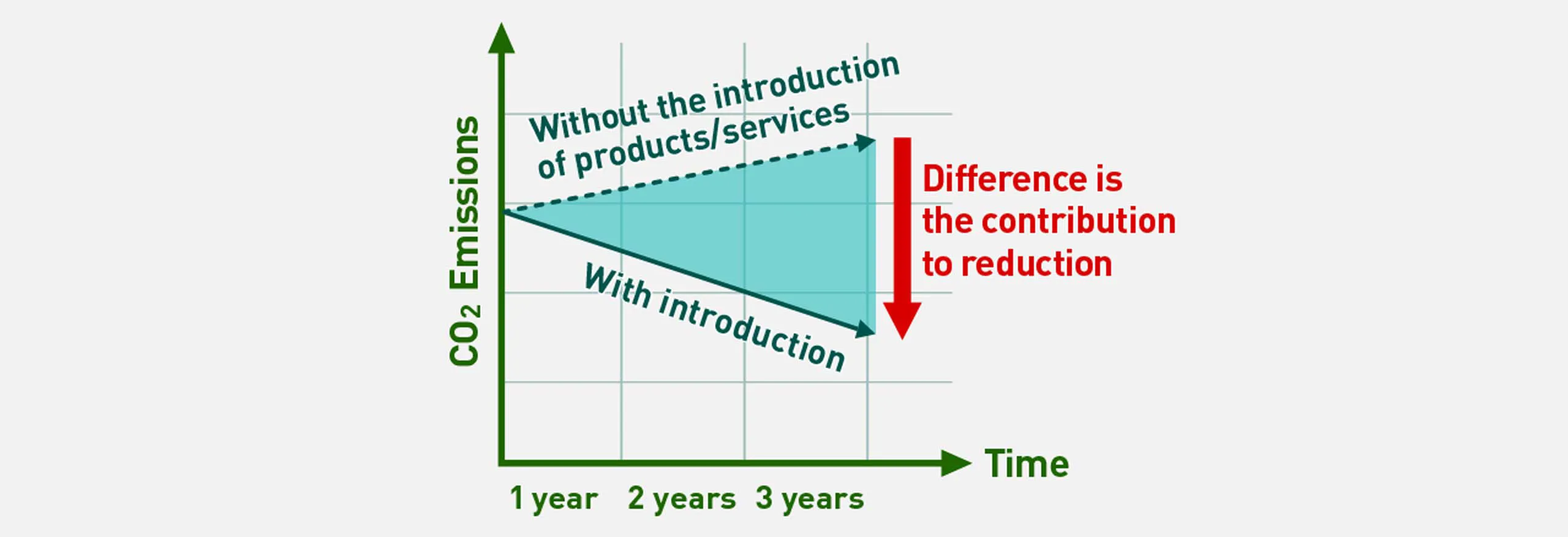
+INFLUENCE
Through Our Three Impacts, Our Communication with Society and Our Corporate Citizenship Activities, Panasonic Will Engage with More People.
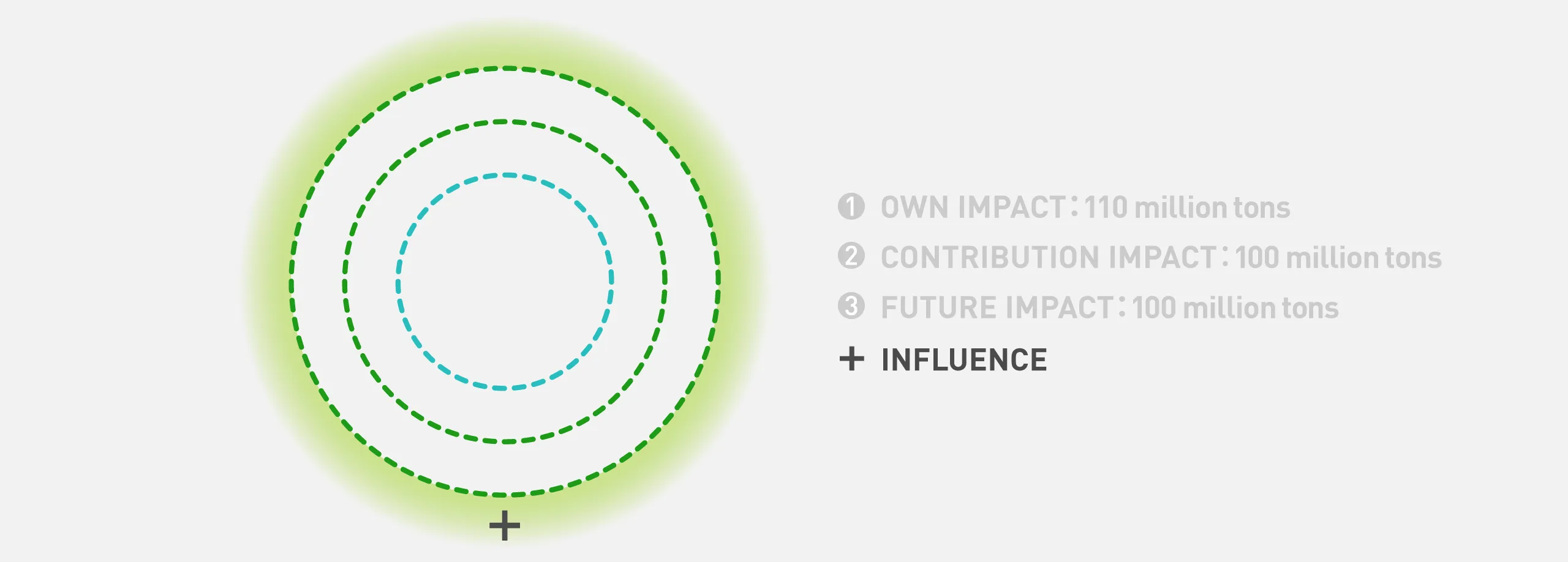
Another essential requirement for realizing a carbon-neutral society is changing the behavior of individuals and raising their environmental awareness. Through our OWN IMPACT, CONTRIBUTION IMPACT, and FUTURE IMPACT initiatives, along with our social communication and corporate citizenship activities, such as Panasonic ECO RELAY for Sustainable Earth, we aim to expand our positive impacts on society.

Contribution to heightened awareness of environmental issues through initiatives like the Panasonic ECO RELAY
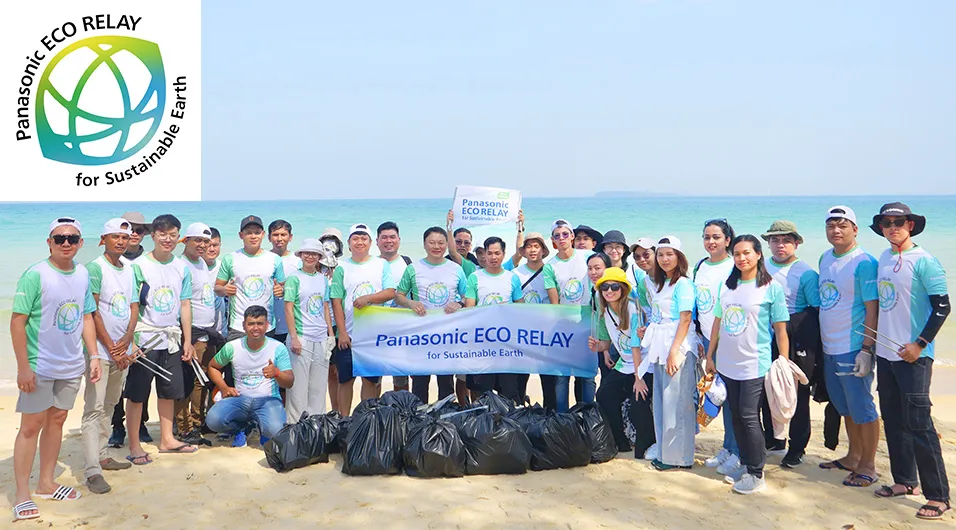
In our ECO RELAY initiative, Panasonic employees and their families from around the world engage in environmental conservation activities rooted in their local communities.
Timeline of Panasonic's Three Impacts
Our Action Plan Towards 2050 to Achieve Carbon Neutrality
As a milestone towards achieving Panasonic GREEN IMPACT, we are aiming to attain net zero CO2 emissions at all our companies, and to create approximately 100 million tons of avoided emissions, by fiscal 2031. In fiscal 2023. we also formulated our GREEN IMPACT PLAN 2024 (GIP2024), an action plan to be implemented by fiscal 2025.
Under OWN IMPACT, we aim reduce CO2 emissions from our own factories and offices, and through initiatives such as improving the energy efficiency of our products in use, we are working toward achieving net zero CO2 emissions across our entire value chain by 2050. As a milestone toward this goal, we aim to realize net zero CO2 emissions at our own factories and offices by FY2031.
With CONTRIBUTION IMPACT, we will strive to enhance the competitiveness of our present business fields, helping our customers and society in general to avoid CO2 emissions. We aim to achieve 93 million tons of avoided emissions by fiscal 2031.
By 2050, we aim to create a total impact of more than 300 million tons by CO2 emissions reduction and avoided emissions.
The Panasonic Group has been reforming our methods of group management to ensure sustainable growth. We plan to start a new mid-term strategy under the new structure from fiscal 2027 (announced in February 2025).
As PGI is linked to business growth, we continue our environmental initiatives by setting single year targets(GIP2024+1) as an extension of the current GIP2024 for fiscal 2026.
Circular Economy
Reinforcing Our Efforts Towards a Sustainable Society by Promoting Circular Economy Initiatives
With Panasonic GREEN IMPACT, we will contribute to the realization of a circular economy wherein resources are used as efficiently as possible throughout the product lifecycle in order to achieve a sustainable society.
The factory waste recycling rate has consistently remained around 99%, with FY2025 results at 99.2%, thereby achieving our target. On the other hand, in terms of recycled resin usage, while we aimed to double the FY2020–FY2022 results and reach 90,000 tons over the three years from FY2023 to FY2025, the total remained at 45,000 tons, falling short of the plan. Going forward, we will steadily promote the use of recycled resins, including the development of materials such as plant-derived resins with lower environmental impact and their application in products.
In addition, in our circular economy businesses, we had established 15 businesses as of FY2025, achieving our target.
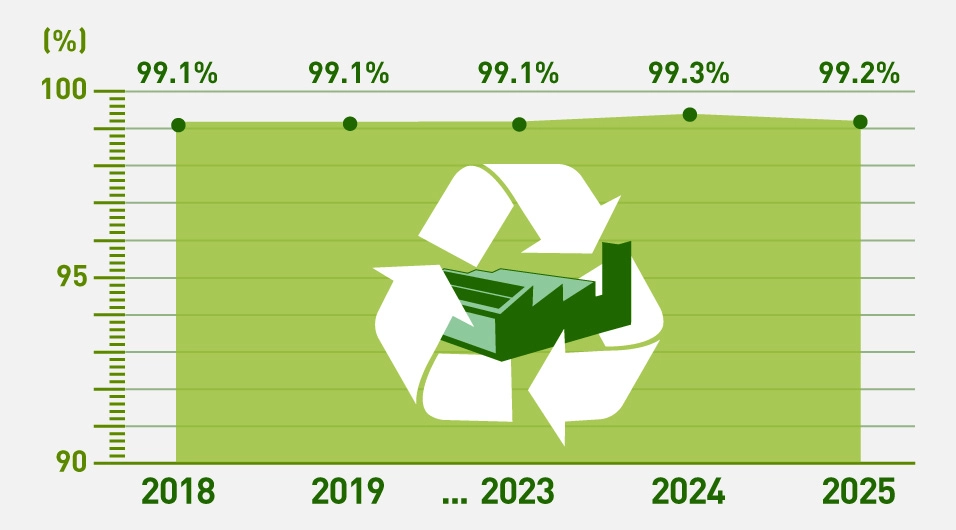
Maintaining a recycling rate of about 99% for factory waste through the implementation of recycling-oriented manufacturing
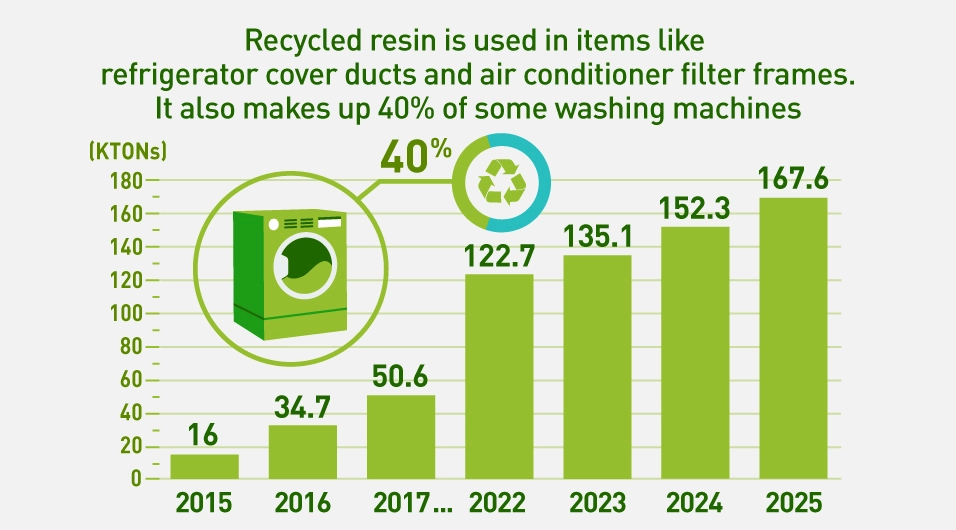
Cumulative volume of recycled resin used
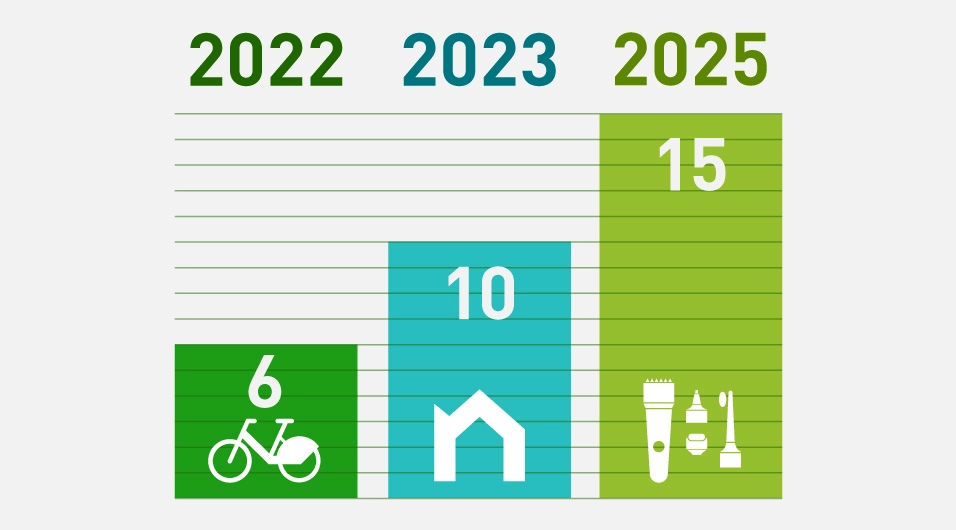
Cumulative total of circular economy business initiatives
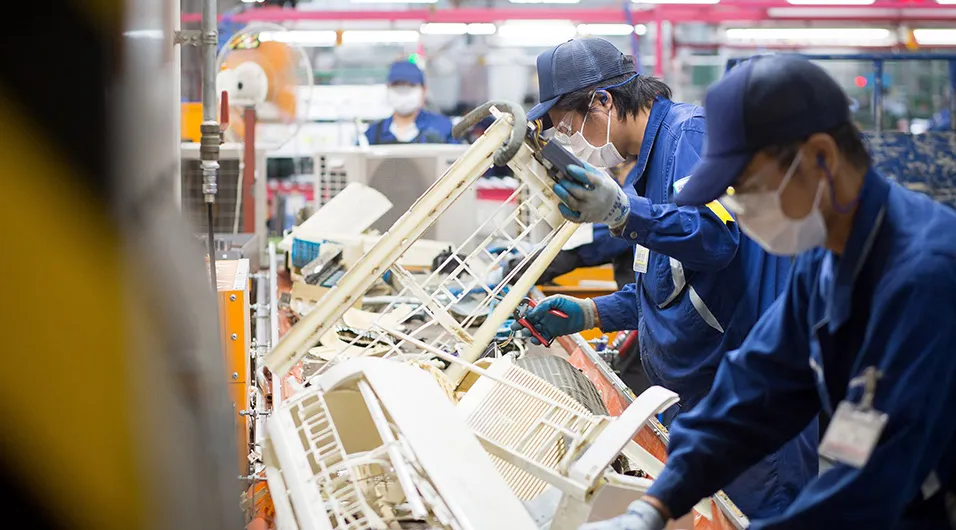
Panasonic Eco Technology Center (PETEC), our home appliance recycling facility

"noiful", our subscription service covering home appliances in rental properties
Due to the increase in CO2, Earth is the hottest it has been in 1,400 years, and climate change is accelerating.
CEO Kusumi shares the Panasonic Group's resolve regarding Panasonic GREEN IMPACT.
The Panasonic Group aims to create impact that reduces CO2 emissions by at least 300 million tons by 2050.
Carbon Neutrality
Circular Economy
